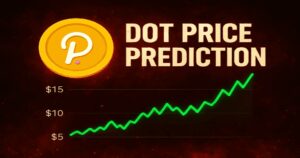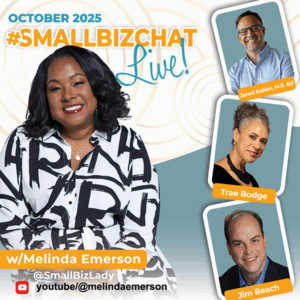Outbound sales is a traditional method of selling where a company initiates a conversation with potential customers.
So, imagine if you were a pizza shop owner who gives out flyers to people passing by, hoping they’ll see your delicious pizza and decide to come in and buy one.
Or, picture yourself getting a phone call from a company trying to sell you a new internet service; that’s also outbound sales!
Essentially, outbound sales strategies are when the seller reaches out to the buyer instead of vice versa.
Outbound Sales Process
The outbound sales process differs from the inbound one.
For instance, outbound sales processes have the following six steps:
- Outreach to potential customers
- Lead qualification
- Product or service demonstration
- Negotiation
- Closing the deal
As you can see, some steps in the inbound and outbound sales processes are identical.
However, the approach is different!
Step 1: Outreach
The outreach phase in outbound strategies involves identifying potential customers and initiating contact.
The outreach step may incorporate various tactics, such as:
- Cold calling
- Email marketing
- Social media advertising
Regardless of the strategy, the sales team will introduce your product or service to prospective customers!
Further, the outreach phase aims to generate interest and set up a more in-depth conversation or meeting to discuss the product or service in detail.
Step 2: Qualification
Remember, lead qualification is crucial for outbound sales teams because it helps them identify potential customers most likely to convert.
When sales reps focus on the right prospective customers, it optimizes their time and resources!
Also, the lead qualification process ensures teams don’t waste sales efforts on uninterested or unsuitable prospects.
As a result, correctly qualifying leads maximizes the chances of closing deals and improves sales efficiency!
Step 3: Presentation
Outbound sales reps must provide a product or service presentation because it conveys the value proposition to potential customers.
Further, offering a sales pitch allows the outbound sales team to do the following things:
- Convincingly demonstrate how their product or service can resolve the customer’s problem.
- Explain how products or services meet the prospect’s needs
- Increase the likelihood of successful lead conversion
Step 4: Negotiation
Negotiation is pivotal in outbound sales strategies because it provides a platform for both the seller and the customer to reach an agreeable deal.
When each party benefits from the deal, it enhances customer satisfaction and boosts sales conversion rates.
Also, by facilitating discussions around pricing, terms, and other specifics, negotiation can cater to the customer’s needs and constraints.
As a result, the negotiation step fosters a sense of trust and partnership that can lead to long-term customer relationships!
Step 5: Deal Close
Lastly, there’s closing the deal!
At this point in the outbound sales process, the following things happen:
- Both parties agree on the contract
- The customer commits to the purchase
- The outbound sales team marks the successful conversion of a lead into a paying customer.
Still, the importance lies in the follow-up after closing the deal!
Following up with buyers leads to the following things:
- Helps maintain a healthy customer relationship
- Encourages repeat business
- Potentially leads to referrals
Pros and Cons of Outbound Sales
Remember, inbound and outbound sales strategies aren’t perfect.
Therefore, outbound selling has a few cons to know about. However, there are upsides to this strategy!
Pros of Outbound Sales
Outbound sales strategies have several advantages, including the following ones:
- The tactics offer quick results
- A sales team has control over the target audience
- Teams can easily scale the methods
Here’s what you need to know about each of these advantages!
Quick Results
Outbound sales strategies, like cold calling and email marketing, often yield immediate responses.
This immediacy in responses benefits businesses looking for quick wins or to boost sales in a short period.
Further, quick results offer instant gratification for sales reps, which can also be highly beneficial for motivational purposes!
Control Over the Target Audience
With outbound sales, companies can target individuals or businesses that fit their ideal customer profile.
This precise targeting can lead to higher conversion rates.
On top of that, understanding who you’re catering to ensures your selling methods are on track to resonate with these people!
Scalability
Lastly, an advantage of an outbound strategy is it’s more easily scalable.
For instance, teams can quickly scale outbound sales methods, particularly those using digital platforms.
Therefore, as a company grows, it can increase its outreach efforts proportionally, reaching a more extensive customer base!
Cons of Outbound Sales
Despite the significant advantages, outbound sales strategies also come with a set of challenges, including:
- Some consumers find the tactics intrusive
- There are lower conversion rates than inbound sales
Here’s what you need to know about these two critical drawbacks.
Intrusiveness
One con of outbound sales methods is their intrusive nature.
For instance, tactics like cold calling or unsolicited emails can sometimes be perceived as annoying or interruptive by potential customers.
Therefore, this intrusive approach can lead to a negative impression of your brand and even deter potential customers.
Low Conversion Rates
Another disadvantage is that outbound sales tactics often result in lower conversion rates compared to inbound strategies.
Since outbound strategies involve reaching out to potential customers who may not be familiar with your brand or product, the likelihood of conversion can be relatively lower.
As a result, this outcome means sales teams may need to contact more prospects to achieve the desired number of conversions!
Examples of Outbound Sales
Two classic examples of strategies to gain outbound leads include the following:
- Cold calling
- Email marketing
Example 1: Cold Calling
Cold calling is a traditional outbound sales strategy where sales reps directly contact prospective customers, usually via phone calls, without prior contact.
Despite its traditional nature, businesses still widely use cold calling for lead generation.
Here’s how the strategy works:
First, the sales rep introduces the product or service, accentuating how it can address the prospect’s needs or solve their problems.
Then, the sales agent attempts to gain contact information or close the sale over the phone!
Although this method can be seen as intrusive, it allows for immediate feedback and can lead to instant results when executed effectively.
Example 2: Email Marketing
Email marketing is another common outbound sales approach.
In this method, a company sends emails to a list of potential customers or a targeted demographic.
Often, the emails include the following things:
- Information about the company’s products or services
- Promotional offers
- Educational content
The key to successful email marketing lies in personalization and value addition, making the prospect feel that the email is specifically tailored for them and not just a generic sales pitch.
Further, while this tactic has a slower response rate than cold calling, it’s highly scalable and can quickly reach a large audience.









